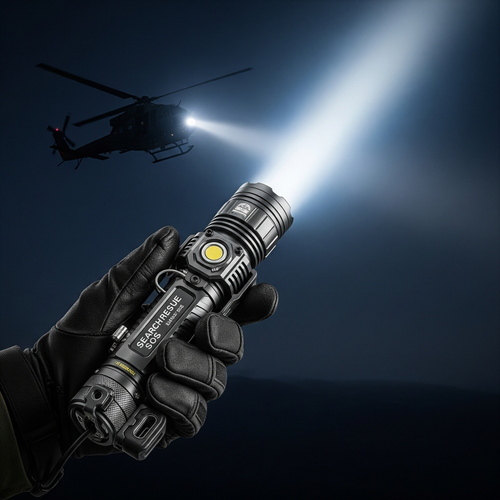Rechargeable Flashlights vs. Battery-Powered: Which is Better for You?
Posted by Raymond on 16th Jul 2025
When it comes to choosing a flashlight, one of the biggest decisions is whether to go rechargeable or battery-powered. Both options have unique advantages, and the right choice depends on how and where you plan to use your flashlight.
This detailed guide explores key differences, pros and cons, and use cases to help you make an informed decision.
Quick Comparison Table: Rechargeable vs. Battery-Powered Flashlights
| Feature | Rechargeable Flashlights | Battery-Powered Flashlights |
|---|---|---|
| Power Source | Built-in or replaceable lithium-ion batteries | Disposable AA, AAA, or CR123 batteries |
| Initial Cost | Higher upfront cost | Lower upfront cost |
| Long-Term Cost | Lower (no disposable batteries needed) | Higher (continuous purchase of batteries) |
| Eco-Friendliness | More eco-friendly (less waste) | Creates more battery waste |
| Runtime | Varies by capacity; easy to recharge | Long runtime if extra batteries are carried |
| Convenience | USB-C charging; no need to buy batteries | Quick battery replacement when spares are handy |
| Performance | High lumen output, stable power delivery | Performance depends on battery quality |
| Ideal For | Frequent use, outdoor, tactical, emergency kits | Occasional use, remote areas without power |
Why Choose Rechargeable Flashlights?
Advantages
-
Cost Savings: No more buying disposable batteries—just recharge and go.
-
Environmentally Friendly: Reduces the number of batteries going to landfills.
-
Modern Charging Options: Most models now feature USB-C for fast charging.
-
Better Performance: Rechargeable flashlights often provide higher lumen output and advanced modes.
Best For
-
Outdoor enthusiasts
-
Emergency preparedness
-
Professionals (mechanics, security, first responders)
Related Reading: How Rechargeable Flashlights Can Save You Money in the Long Run
Why Choose Battery-Powered Flashlights?
Advantages
-
Low Initial Cost: Affordable upfront price.
-
Instant Power Swap: Just replace the batteries and keep going.
-
No Charging Needed: Great for remote locations without electricity.
-
Long Shelf Life: Disposable batteries (especially lithium) have long storage life.
Best For
-
Occasional users
-
Remote areas or disaster kits where charging isn’t an option
-
People who prefer low maintenance
Learn more about emergency flashlights for natural disasters.
Which One Should You Buy?
The decision depends on your usage pattern:
-
If you use flashlights frequently and want long-term savings, rechargeable flashlights are the clear winner.
-
If you need a flashlight that works in remote areas or long-term storage, battery-powered flashlights are more practical.
Our Recommendation
Rechargeable flashlights offer better value for most users due to cost savings, convenience, and eco-friendliness. Modern models like the TANK007 TK737 and Fenix PD36R combine USB-C charging, compact size, and long runtime, making them ideal for everyday and professional use.
Check out the best rechargeable flashlights of 2025 for top picks.
Pros and Cons Summary Table
| Type | Pros | Cons |
|---|---|---|
| Rechargeable Flashlight | Cost-effective, eco-friendly, high performance | Higher upfront cost, needs charging |
| Battery-Powered Flashlight | Affordable, easy to find batteries, good for backup | Expensive long-term, less eco-friendly |


